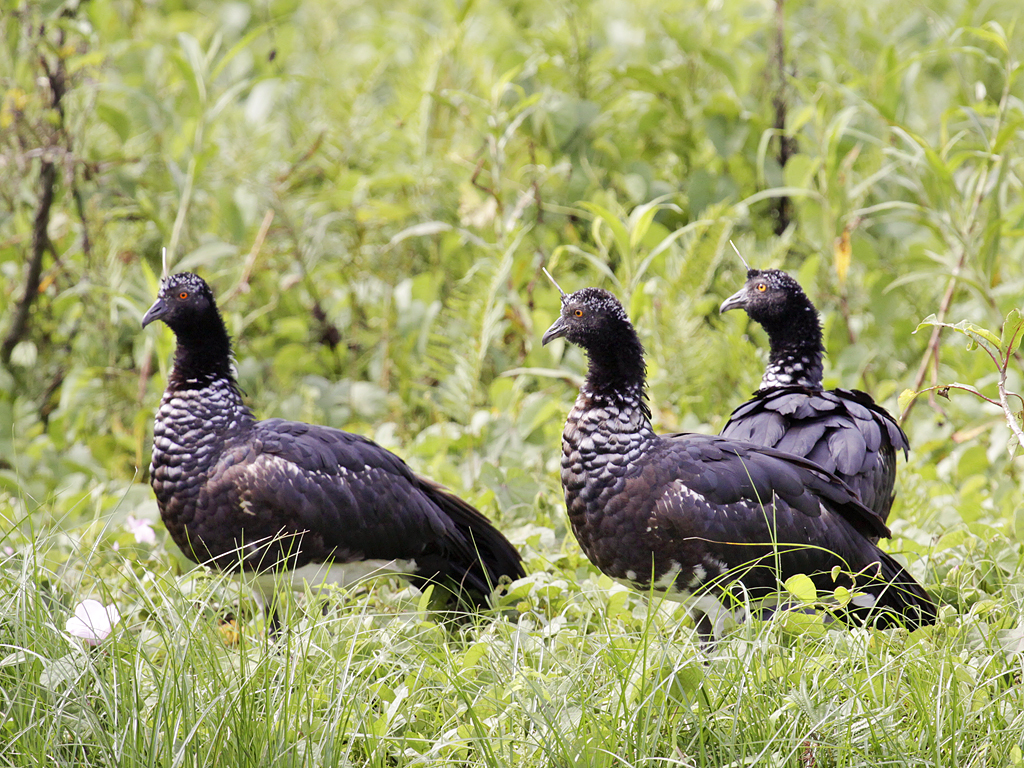
COMMON NAME: Horned screamers
SCIENTIFIC NAME: Anhima cornuta
TYPE: Birds
DIET: Herbivore
AVERAGE LIFE SPAN: Unknown
SIZE: About the size of a turkey
WEIGHT: Up to seven pounds
What is a horned screamer?
Horned screamers are the unicorns of the bird world.
Over the course of their lives, these birds grow long, white spines of cartilage in the middle of their foreheads. Some birds possess horns approaching six inches in length. No other birds on earth have anything like it.
Unlike with rams and rhinos, the screamer’s horn doesn’t seem to be a weapon, because it is only loosely attached to the skull and known to snap off once it grows too long. In time, broken horns even grow back. This leads scientists to believe the horns serve an ornamental purpose rather than a functional one.
While the horns are harmless, the screamers are not. Each bird sports a pair of sharpened bone spurs on its wings. These are used to defend territory and battle with each other for mates. After particularly nasty encounters, scientists have even found pieces of spur broken off and lodged in other birds’ chest like shrapnel.
Aside from their strange horns, these birds also possess some interesting anatomy below the surface. Inside their bones and skin are tons of tiny air sacs that reduce the weight of these large birds, which is thought to help them soar long distances without using muscle energy. These air sacs sometimes collapse simultaneously when the horned screamer takes off, creating a loud crackling noise.
As its name suggests, this bird is also known for the loud calls it creates. The main one is described as sounding like, “mo-coo-ca,” leading some indigenous peoples to call the birds “mahooka.” This call sounds a bit like a goose, a close relative of horned screamers.
Habitat and diet
Horned screamers can be found from Colombia and Ecuador down to south-central Brazil. Like their close cousins, ducks, geese, and swans, these birds prefer wet habitats, such as freshwater lagoons, tropical wet savannas, and lakes.
As herbivores, horned screamers spend much of the day grazing on grasses found in and around water. The birds have also been observed nibbling leaves, stems, flowers, and vines, as well as digging in mud.
Reproduction
While it can take some fighting to win a mate, a horned screamer partnership can last a lifetime. The male and female spend all year together, constantly preening each other to maintain the pair bond. They also take turns incubating the eggs they create, with females tending to sit on the brood during the day and males taking the night shift. Once the chicks hatch, both parents also provide food for their young.
Relatives and conservation
Horned screamers (Anhima cornuta) are one of three species of screamers, all of which reside in the wetlands of South America. Horned screamers and southern screamers (Chauna torquata) are not considered to be in danger of extinction, according to the International Union for Conservation of Nature. However, the northern screamer (C. chavaria) is listed as near threatened, which is thought to be due to loss of habitat in its geographic range at the northwestern tip of the continent.

source: https://www.nationalgeographic.com








